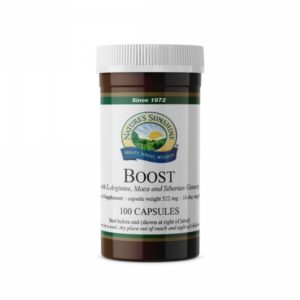Nootropics, ‘smart drugs’ or cognitive enhancers are any substance – drugs, supplements or food – that may improve cognitive function, particularly executive functions, memory, creativity, or motivation, in healthy individuals. While many substances are purported to improve cognition, research is at a preliminary stage, and the effects of the majority of these agents are not fully determined. Currently, it represents one of the most debated topics in the neuroscience community.
Human beings always wanted to use substances to improve their cognitive functions. Hallucinogens were used in ancient civilisations in an attempt to allow them to better communicate with their gods. These practices have had a come back recently with the modern use of substances including DMT, Ayahuasca, Psilocybin, Mescaline, and LSD in both adventurous individuals and clinical studies to promote wellbeing and treat mental health disorders such as depression including PTSD. Not to mention caffeine, the most widespread cognitive enhancer, in the various forms (energy drinks, tablets, etc.).
The word nootropic was coined in 1972 by a Romanian psychologist and chemist, Corneliu E. Giurgea, from the Greek words νοῦς (nous), or “mind”, and τρέπειν (trepein), meaning to bend or turn.
I take some supplements that one might consider to be nootropics, however you have to be careful with what you choose to consume, especially over the long-term.
When we introduce any compounds to our bodies, they can disrupt complex biological systems and we risk triggering feedback systems that can result in unintended consequences such as receptor down-regulation.
What do I mean by down-regulation?
For example, if you take a pharmacological drug that blocks the transporter cells that re-uptake and metabolise neurotransmitters, they will stay in the nerve synapse for a longer period of time, exerting more biological effects. (This is how MDMA (ecstacy, E) works, increasing concentrations of the neurotransmitters serotonin, norepinephrine, and dopamine in the cytosol of a monoamine neuron.)
In the short term, this may be a good thing but the downside is that over time this causes the receptors that bind to these various neurotransmitters to decrease in number. This is what we call down-regulation.
When you do not take that same substance for a few days, basal levels have changed so that, without the substance that inhibit reuptake, your neurotransmitters will not have as strong an effect that would have have before you started supplementing because of changes in number of receptors or their density (amount per area of space). This is why long term use of drugs that are ‘uppers’ will lead to depression when the user ‘comes down’ and they may end up addicted to the drug, just to maintain a normal level of cognition.
For this reason, I prefer to focus primarily on food and nutrition since whole food usually works more indirectly by providing nutrients that are found in and required by the body and the brain.
When compounds are found in food (such as plant polyphenols) we have a greater chance of getting benefits without damaging effects because we have evolved these xenohormetic compounds. If the substances do not have that shared evolutiion, they are put under some more scrutiny before we are certain that there is not any side effects. To confirm that these compounds are safe may take many years. This is the reason, I tend to avoid compounds that are inhibitors of enzymes in the brain, which are very commonly found in many nootropic pills. Even though they most likely work in the short term, we do not have good research into what, if any, long-term side effects may happen.
Nootropics Worth Trying
All that being said, there are some nootropics that I have tried including Nature’s Sunshine‘s Boost with L-Arginine formula, which I take every morning. It contains stimulating herbs and nutrients including l-arginine, maca extract, ginseng root, oat straw concentrate, red raspberry leaves, damiana leaves, licorice root, and sarsaparilla root.
Siberian Ginseng is an ‘adaptogen’, traditionally used to support the whole body during periods of emotional stress. Adaptogens are a group of herbal medicine ingredients used to improve the health of your adrenal system, the system that’s in charge of managing your body’s hormonal response to stress.
They are supposed to strengthen the body’s response to stress and enhance its ability to cope with anxiety and fight fatigue. The term is not accepted in pharmacological, physiological, or mainstream clinical practices in the European Union, however marketing herbs as such is not forbidden. They’re called adaptogens because of their unique ability to “adapt” their function according to your body’s specific needs.
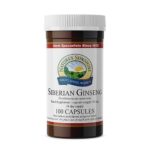
Siberian Ginseng is held in high esteem in China, where it has been valued for thousands of years, supporting energy, and helping to balance the body. Its name comes from the Chinese ‘jen shen,’ which means ‘man root’, so-named because some roots have limb-like branches resembling arms and legs. Ginseng has a long history of worldwide use in supporting energy and vitality. Siberian Ginseng Root is a natural source of beneficial flavonoids, that play a role in well-being. The root is not harvested until it is two or more years old, the older the root, the higher its value.
L-Arginine is an amino acid that supports optimal blood flow and circulation. It is a precursor for the synthesis of nitric oxide (NO), which is a signaling molecule in many physiological and pathological processes. The endothelium (inner lining) of blood vessels uses nitric oxide to signal the surrounding smooth muscle to relax, thus resulting in vasodilation and increasing blood flow to the whole body including the brain. Early research suggests that L-arginine might improve memory loss related to aging. There is some interest in using L-arginine to improve symptoms associated with MELAS (myoclonic epilepsy with lactic acidosis and stroke-like episodes) syndrome.
Damiana is commonly recommended by herbalists for its traditional use in supporting energy production, and nervous system health and function.
Oat straw concentrate (Avena sativa) is an alleviator of neurological stress and exhaustion, which has been shown to have a positive impact on cognitive performance in healthy subjects.
Alpha BRAIN: The Clinical Study
Onnit’s flagship Earth grown nutrient based supplement, Alpha BRAIN , demonstrates statistically significant cognitive improvement for healthy, intelligent adults in a double blind, placebo controlled, randomized trial conducted by The Boston Center for Memory.
Learn more: https://onnit.com/alpha-brain-clinica…
The Unusual Suspects in Nootropics
No post on nootropics would be complete if I did not briefly mention two old favourites of mine: Vitamin D and omega-3.
Both these compounds have diverse effects, extending far beyond the field of cognition, however just for their role in cognition, they would both still be very relevant.
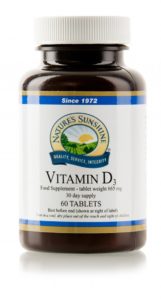
Firstly, let’s look at Vitamin D. It affects serotonin production. This has implications not just for adults looking for biohacks to optimise performance and wellbeing but also for neurodevelopmental disorders.
Limited serotonin production may be especially important for brain development in utero when the foetus gets it’s vitamin D from its mother. A massive 70% of people in both the U.S. and U.K. can be classified vitamin D insufficient and that includes pregnant women. Those with dark skin – Afro Caribbean and south Asians – living in cold climates are particularly susceptible. The National Health Service in the U.K. recommends that everyone in these populations supplements with vitamin D in the winter months when it is often overcast.
Vitamin D needs to be monitored from time to time with a blood test in order to titrate to a dose that is needed.
It is probably best to aim for 40 to 60 ng per millilitre of blood (ng/ml) since there have been a pieces of research on all-cause mortality that imply that this may be an ideal level.
This vitamin can be toxic in the higher ranges (though these are very high) so it is best to not excessively dose without monitoring. A dose that may work for one person might not for another because of individual difference which can affect the level of deficiency. These include age, weight, genetic expressions, how much sun light you get (latitude you live at), ethnicity including skin colour, how much time you spend outdoors, whether you wear sunscreen, etc. As a rough guide, you may be able to tolerate between 2000 IU and 4000 IU – which is the upper level recommended by the Institute of Medicine.
Vitamin D should be taken alongside a source of vitamin K. Two natural sources of this vitamin are Gotu Kola and Alfalfa. Gotu Kola herb is often referred to as ‘brain food’ so is a nootropic in its own right. It is a natural source of vitamins A, E, K, along with B vitamins and magnesium. Alfalfa, often referred to as the ‘father of herbs’, a natural source of vitamin D, E, K and B.
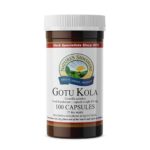
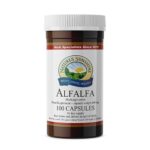
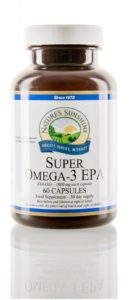
Secondly, let’s look at omega-3 fatty acids. Approximately 8% of the brain is made of omega-3. Their is a large number of studies that show optimising intake of omega-3 have effects on cognition and behaviour.
Recent research demonstrated that supplementing omega-3 increased nerve growth factor that elevated the enzyme responsible for producing acetylcholine, increased vascular endothelial growth factor, and brain-derived neurotrophic factor.
The More Unusual Suspects
Any substance that ia able to cross the blood-brain barrier could be considered a nootropics, unless it has a negative effect like alcohol. There is emerging evidence that vegetable extracts like sulforaphane exerts effects on the brain.







Certain substances, like sulforaphane, that cross the blood-brain barrier also have effects on the the immune system that is known to affect the brain through the lymphatic vessels. This helps explain why
manipulating levels of systemic inflammation has been shown in research to elevate or alleviate feelings of depression, by either injecting in substances like interferons to elevate immune system activity or through the co-administration of a natural anti-inflammatory like omega-3 fatty acid eicosapentaenoic acid (EPA) respectively.
Sulforaphane has been found in two pieces of randomised, double-blinded, placebo-controlled research in humans to have effects on the brain and behaviour. For example, supplementing with sulforaphane extracted from broccoli sprouts at doses between 9 mg and 25 mg (the amount that you may find in approximately 65 grams of fresh broccoli sprouts) was able to increase autistic behaviour scores by 34% leading to significantly improved social interaction, abnormal behaviour, and verbal skills in young men on the autism spectrum. Some measurable effects have also been seen in people with schizophrenia.
Dr Rhonda Patrick, a big fan of sulforaphane reported the following findings of its effects on the brain and behaviour in various animal models that are awaiting to be replicated in humans:
- Improve spatial working memory and short term memory in mice in the context of conditions that can affect memory in a deleterious way, such as Alzheimer’s Disease.
- Increase neurite outgrowth, which is how damaged neurons and synapses repair themselves after damage from traumatic brain injury
- significantly reduce memory impairment that has been experimentally induced by a drug that works specifically by interfering with the effects of acetylcholine in the nervous system, a drug known as scopolamine.
- Improve the cholinergic system by increasing acetylcholine levels, decreasing acetylcholine esterase activity, and increasing choline acetyltransferase (enzyme responsible for synthesising acetylcholine in the hippocampus and frontal cortex)
- have a positive effect on mood and alleviated depressive symptoms and anxiety as effectively as the antidepressant Prozac in a mouse model of depression.
Supplementing sulforaphane can be expensive and it is hard to tell how much you are getting because sulforaphane is made from a precursor known as glucoraphanin. Many supplements are actually just glucoraphanin. Some are glucoraphanin with the enzyme called myrosinase that converts it into sulforaphane. Avmacol is one example of this supplement.
There is also stabilised sulforaphane.
The three categories of products have huge variations in terms of bioavailability: ~10% on average for glucoraphanin, 40% for the glucoraphanin plus myrosinase combination, and ~70% for stabilised sulforaphane.
A great solution, advocated at the start of this blog is growing and/or eating broccoli sprouts at home. It is estimated that fresh broccoli sprouts have a concentration of 0.45mg of sulforaphane per gram, depending on the seed quality and genetic background, the age of the sprouts, how you consume the sprouts, whether they were fresh or frozen. All this can make dosing a bit tricky.
There you have it, my recommendations for what nootropic I would consider supplementing with or consuming. As always, consult a doctor or pharmacist before commencing any change in your supplements if you are taking other drugs.
Enjoy!
Scott
References:
http://tim.blog/2017/05/25/transcript-dr-rhonda-patrick-on-exploring-smart-drugs-fasting-and-fat-loss/


